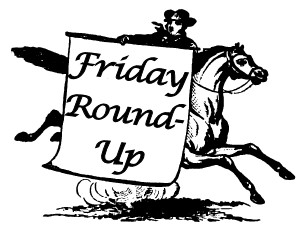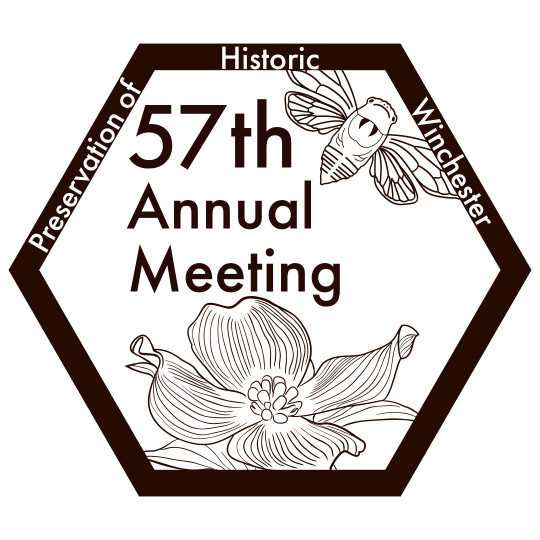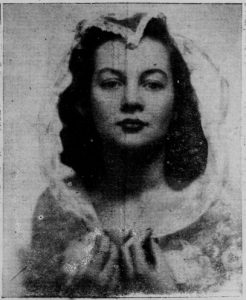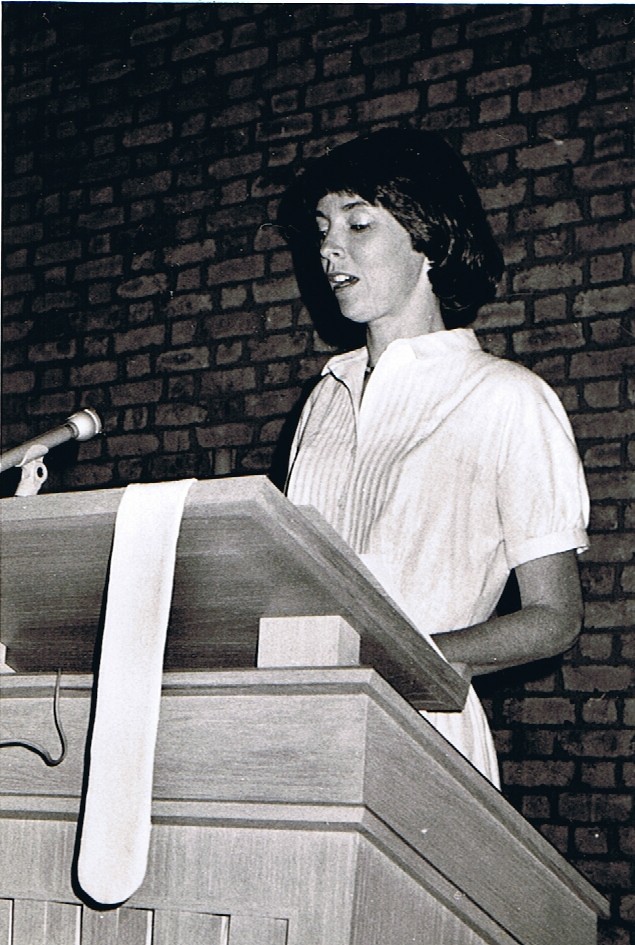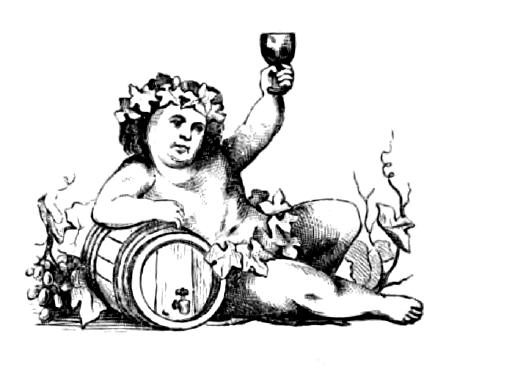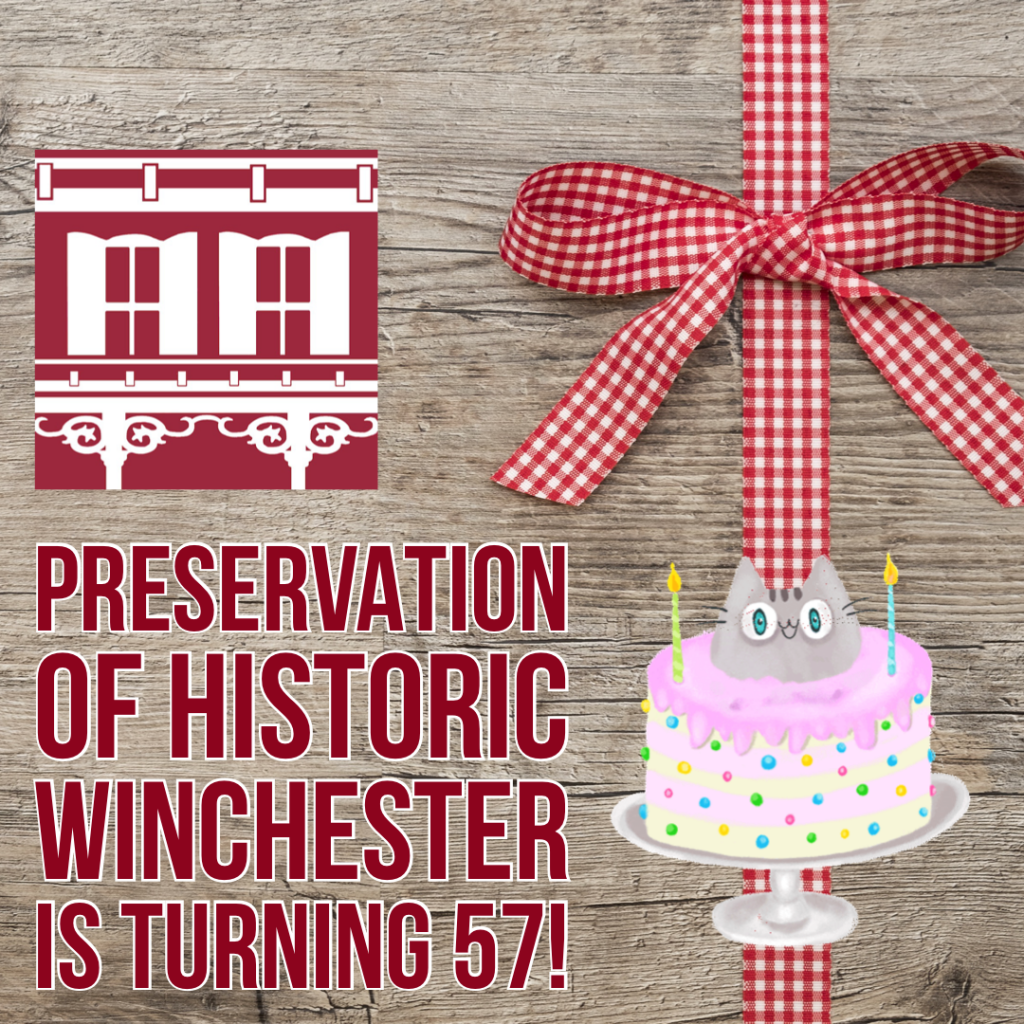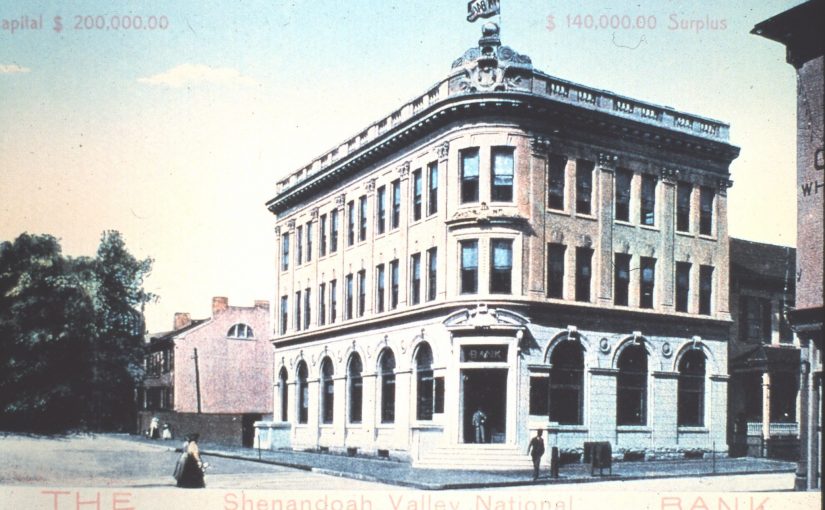Preservation of Historic Winchester’s 57th Annual Meeting: Meet your friends or make new acquaintances in the local preservation community on Sunday, June 27, 3 PM at the backyard of the Hexagon House, 530 Amherst Street. The gathering will elect PHW’s board of directors for 2021-2022, touch on the past year’s challenges and accomplishments, and conclude with the presentation of preservation awards. Please bring your own chairs; liquid refreshments will be offered. The organization will be following any restrictions in place at the time of the meeting to comply with state mandates to prevent the spread of COVID-19.
Only PHW members in good standing may vote at the meeting. Membership forms will be available on-site; new or renewing members may pick up a free copy of “Winchester: Limestone, Sycamores & Architecture” with their membership dues.
Don’t forget to turn in your award nominations by May 28 to help recognize people and projects at this event!
Requests Requested! Is there a photo in our Flickr collection you would like to see captioned for more information? Drop us a note and we’ll add the photo to the queue to highlight in a future social media post.
We have received one of our first donations of historic materials and images following our call last newsletter. While we did not put all the material online, we are delighted with the digital materials shared by Howard Lewis on Hawthorne at 610 Amherst Street. The items that are not publicly available on our Flickr have been added to our hard copy and digital collections on the historic district for future researchers. If you also have material to contribute, drop us a note at phwinc.org@gmail.com to see if it fits our collection scope.
In-Kind Donation Wish List: PHW is looking for basic materials to help keep the office in shape and running, such as paper, mailing labels, and file folders, and likely in the future things like ink cartridges and toner. If this kind of item donation calls to you and you have an Amazon account, please refer to our Amazon Charity List for ideas. If you have opened or slightly used items on this list (like a half-used pack of mailing labels or legal size paper you no longer need), we are also happy to take them in-person at our office. Arrange a drop off time by emailing phwinc.org@gmail.com or calling 540-667-3577.
Research Request: Are you interested in helping Winchester clarify and confirm its African-American community’s history? We are continuing to work on questions posed to us by Mark Gunderman in his deep dive into the history of John Mann UMC. This week, we are hoping to gather additional information on George Smith, mentioned in William Greenway Russell’s recollections as “a colored man of the town” who left money to the congregation to build the brick church about twenty years before the recollection was written (thus around 1856). His contribution to the church was undoubtedly great, but his name has disappeared from public memory. If someone wants to take up the research mantle and run with what we (think we) know about George Smith, please get in touch with the PHW office.
If you are missing Kidzfest this year, don’t fret! Two history-themed activities the whole family can enjoy are taking place this weekend. Fort Loudoun will host a living history event from 10 a.m. to 3 p.m. on Saturday May 15 at 419 N. Loudoun St. Visitors will learn about the history of the French & Indian War era at the site of Col. George Washington’s headquarters for the Virginia Regiment. Meet living history interpreters and tour the site. Admission is free. Information available at 419-971-3493 or www.FIWF.org.
The Cedar Creek Battlefield Foundation Museum and Visitor Center will host a living history day from 10 a.m. to 4 p.m. Saturday and Sunday, May 15 and 16, at 8437 Valley Pike, Middletown. Costumed historians will host photography workshops, cooking demonstration, muster in new recruits and practice drill, have Civil War medicine displays, play period games and tell stories and the cavalry will have their horses to talk about the roles of horses during the war.
